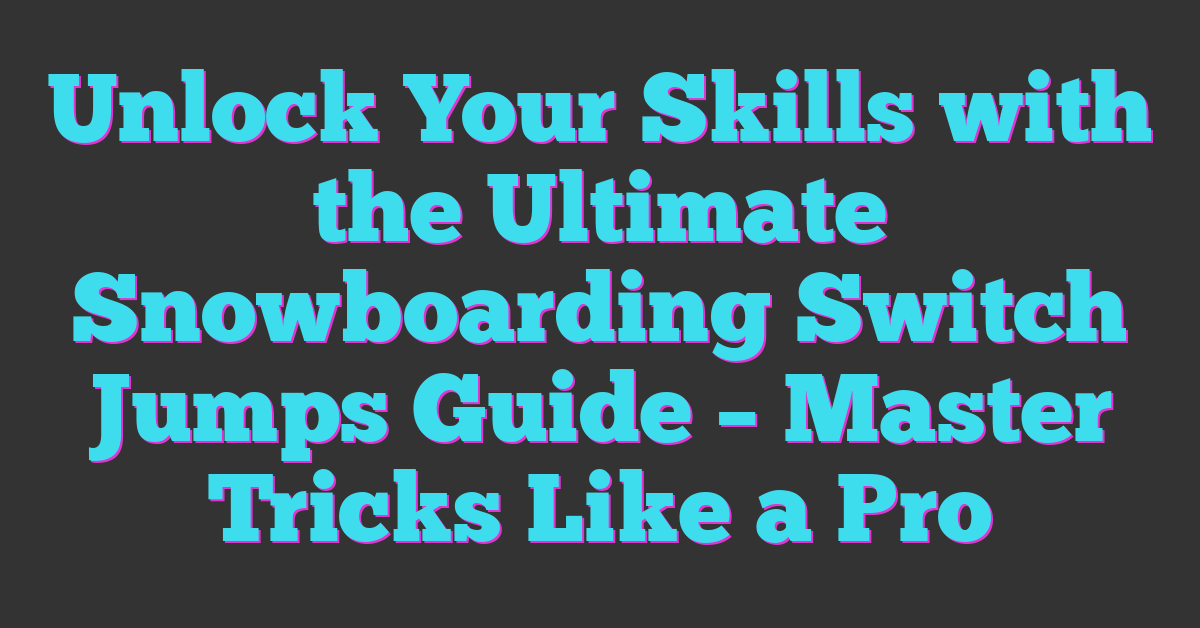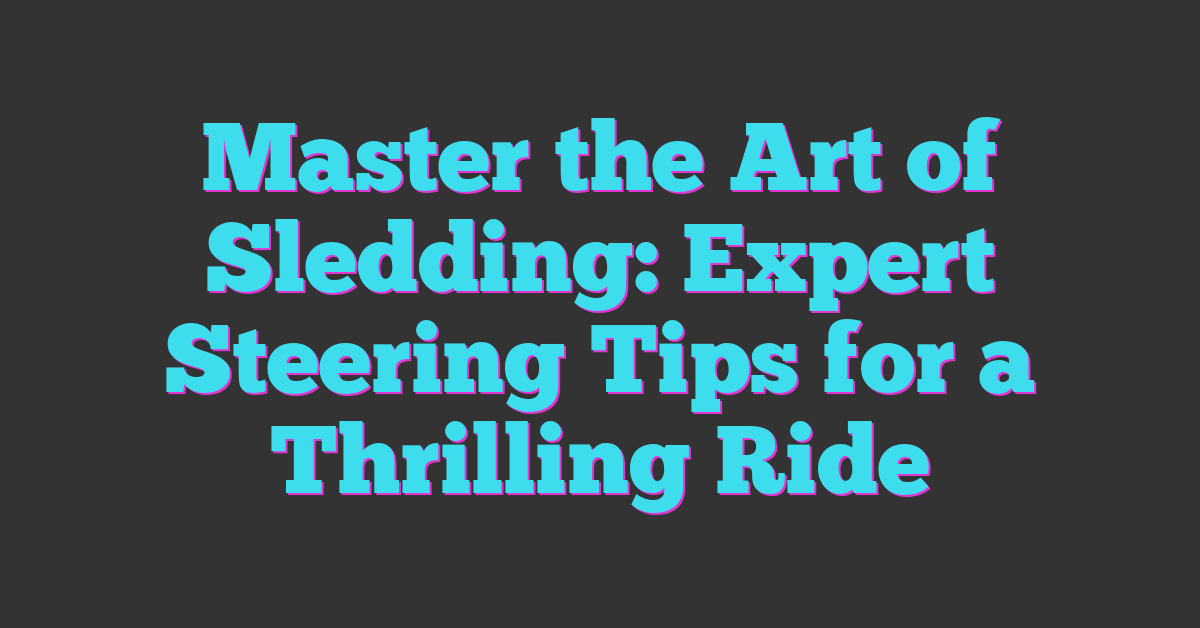Switch jumping can take your snowboarding skills to the next level. Riding switch means you’re leading with your non-dominant foot, which can feel tricky at first. But mastering this move opens up a whole new world of tricks and style on the slopes.

If you want to impress your friends or just challenge yourself, learning switch jumps is a great place to start. With the right tips and practice, you’ll gain confidence and control while riding switch. This guide will help you get comfortable in the air and land smoothly every time.
Understanding Switch Riding in Snowboarding
Mastering switch riding unlocks a whole new dimension to your snowboarding skills. Riding switch means you ride with your non-dominant foot forward, which changes your balance and approach to jumps.
What Is Switch Riding?
Switch riding happens when you lead with your opposite foot than usual. If you normally ride with your left foot forward (regular), switch means riding right foot forward (goofy), or vice versa. This reverses your body’s natural alignment and forces your muscles and brain to adapt. You move differently, spot landings from new angles, and adjust your posture. This skill challenges your awareness and control, making you a more versatile rider.
Why Practice Switch Jumps?
Practicing switch jumps boosts your balance and board control because you train your weaker side. That training creates muscle memory you’ll use when landing switch or transitioning between stances. It also improves your creativity, allowing you to try new tricks from different directions. With switch jumps in your arsenal, your riding style gains complexity and fluidity, impressing fellow riders and lifting your confidence when you hit the park or backcountry.
Preparing for Switch Jumps
Switch jumps demand focused preparation to build confidence and control before hitting the terrain park. You need solid fundamentals and the right gear to stay safe and perform well.
Essential Gear and Safety Tips
Start with a well-fitted helmet to protect your head during falls. Add wrist guards and padded shorts to reduce injury risk, especially while learning new tricks. Choose boots that offer firm ankle support and ensure your bindings are snug and adjusted for switch stance. Check your snowboard’s edges for sharpness to maintain grip on takeoff and landing. Always scout your jump before attempting switch takeoffs to understand the landing zone and any potential hazards. Consider riding with a buddy who can assist if you run into trouble.
Basic Switch Riding Techniques to Master First
Ride switch confidently on flat terrain before attempting jumps to build muscle memory. Practice smooth turns and controlled speed while leading with your non-dominant foot. Focus on keeping your weight centered over the board and your knees slightly bent to absorb shocks. Use small ollies and pop off gentle rollers in switch stance to get used to the timing and balance required for switch jumps. If you hesitate, lean into your weaker side through repeated drills on easy slopes to strengthen that side’s coordination. Mastering these basics ensures your body adapts to switch riding mechanics, making jump attempts safer and more successful.
Step-by-Step Guide to Snowboarding Switch Jumps
Mastering switch jumps means focusing on every step from approach to landing. Each phase demands precise control and awareness to boost your confidence and style when riding switch.
Approach and Takeoff
Start by riding switch on a gentle slope, keeping your speed steady and controlled. Shift your weight slightly forward over your lead foot to maintain stability. Spot the jump early to line up your trajectory cleanly. Initiate the ollie just before the lip by bending your knees and springing upward with both feet even, ensuring your board stays flat and aligned with your body. Avoid leaning back, as it disrupts balance and reduces height.
In-Air Techniques and Body Position
Keep your body compact and centered over the board during flight. Pull your knees slightly toward your chest to control rotation and stay balanced. Use your arms to stabilize—extend them naturally without stiffness. Focus your gaze ahead, not down, to maintain orientation and prepare for the landing. Keep your core engaged; this helps absorb air movement and maintain control through the jump.
Landing Smoothly and Maintaining Balance
Aim to land on both feet with knees bent to absorb impact evenly. Shift your weight slightly uphill to avoid skidding and maintain momentum. Keep your upper body relaxed and aligned with the board’s direction to prevent falls. Ride away confident, adjusting your stance subtly if needed to stay balanced and ready for the next move. Consistent practice of these steps builds muscle memory and elevates your switch jumping skills.
Common Mistakes and How to Avoid Them
Switch jumping challenges your coordination and balance differently. Knowing typical errors keeps you safe and helps progress faster.
Typical Errors in Switch Jump Execution
- Looking down at your board. Focus your eyes ahead to maintain balance and anticipate landing.
- Bending at the waist instead of knees. Keep your knees flexed to absorb impact and control landing.
- Leaning back. Keep your weight centered or slightly forward to avoid losing control mid-air and on landing.
- Rushing the takeoff. Approach jumps at a consistent, controlled speed to maintain balance and timing.
- Forgetting to engage the core. A tight core stabilizes your body, improving air control and smooth landings.
- Turning your head while in the air. Keep your head aligned with your shoulders to maintain rotation and orientation.
Tips for Improving Consistency
- Practice switch riding daily on flat terrain to strengthen your non-dominant side before hitting jumps.
- Break down jumps into smaller steps: approach, pop, air control, and landing. Focus on one at a time.
- Record your jumps to observe posture and landing. Self-analysis accelerates improvement.
- Warm up with small ollies and switch turns to build muscle memory before attempting bigger jumps.
- Rest between runs to keep your body fresh and avoid developing bad habits from fatigue.
- Visualize each jump mentally, imagining the correct form and landing to prime your muscles.
- Work with a coach or experienced rider who can give immediate feedback and correct errors.
Advanced Switch Jump Variations
Mastering advanced switch jump variations opens new horizons in your snowboarding progression. You increase your versatility by adding spins and tricks, and you seamlessly blend switch jumps into your overall riding style.
Adding Spins and Tricks
Start by incorporating 180s and 360s into your switch jumps to challenge your rotational control. Focus on spotting your landing early while keeping your body compact in the air. Next, experiment with grab tricks like mute grabs and tail grabs performed switch to enhance style. Progress to switch backside and frontside rotations, ensuring your shoulders and hips initiate the spin smoothly. Practice on smaller jumps to build consistency before moving to larger features. Remember, keeping your core engaged and eyes forward during these maneuvers improves balance and reduces the risk of crashes.
Incorporating Switch Jumps into Your Riding Style
Integrate switch jumps into your daily runs by using them in flow-based terrains and park laps. Mix switch jumps with switch jib tricks or switch board slides to create fluid combos that impress and push your limits. Challenge yourself by entering switch jumps directly from irregular lines or after technical switch turns, which develops adaptability under variable conditions. Consistent use of switch jumps improves confidence and enhances your overall control, making you more dynamic and unpredictable on the mountain.
Conclusion
Taking on switch jumps adds a whole new layer of excitement and challenge to your snowboarding. As you keep practicing, you’ll notice your balance, control, and creativity improving in ways you didn’t expect.
Remember to be patient with yourself and enjoy the process of learning something fresh. With time, those switch jumps will become a natural part of your ride, making every run more dynamic and fun. Keep pushing your limits and have a blast out there!










